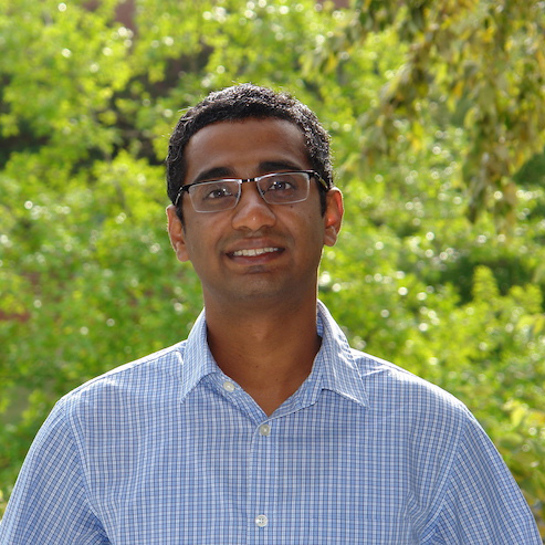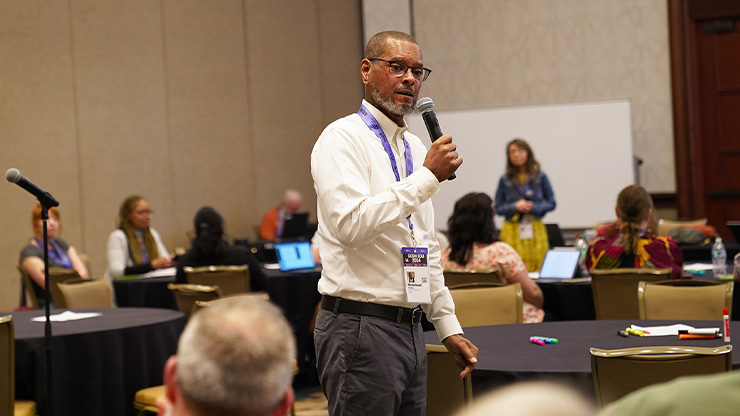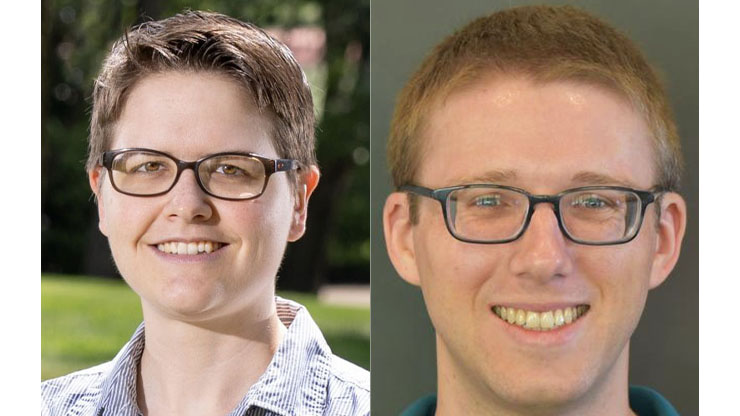The Outreach Component of My NSF CAREER Award
In 2019, I was fortunate to receive the Faculty Early Career Development Program (CAREER) award from the U.S. National Science Foundation (NSF) after applying for the very first time. According to the NSF, this award “supports early-career faculty who have the potential to serve as academic role models in research and education.” It is my understanding that the integration of research and education is essential. For the educational component of my CAREER project, I thus proposed a collaboration with high school teachers to develop educational materials for their classrooms. The goal of this article is twofold: In the first part, I will talk about how we created the teaching materials, and in the second part, I will share insights about the CAREER award application process.
Developing the Teaching Materials
Every mathematics instructor encounters students who ask, “When will I use this in real life?” Although I was relatively good at mathematics while growing up in Bangalore (now Bengaluru), India, I wasn’t particularly drawn to the subject until college. I discovered applied math as an engineering major, which changed my career trajectory. Specifically, it led me to graduate school and eventually to an academic career in mathematics. Given my own path, I wanted to provide that same kind of exposure to other students at an even earlier stage of their schooling.1
I chose to work with high school teachers in my CAREER project for several reasons.2 First, the materials that we developed would ultimately reach more people because teachers interact with many students throughout their careers. Second, the teachers could use their pedagogical experience to help me explain the mathematical concepts at an appropriate level and enhance the overall delivery.
I developed the materials over the course of four summers between 2020 and 2024 by working intensely with a small group of high school teachers during two-week workshops each year. For the first two years, I advertised the opportunity widely throughout my network and conducted phone interviews to identify possible candidates. I specifically chose teachers with experience in both curriculum development and classroom instruction, and I couldn’t have asked for a better group of educators in the first year. They were full of enthusiasm and ideas, and we ultimately developed three modules that focus on image processing, X-ray imaging (see Figure 1), and the mathematics of ranking. Each self-contained module includes an introduction to linear algebra, comprises lesson plans and ideas for implementation, and identifies the North Carolina (NC) educational standards that it addresses.

In the span of five years, I worked with eight teachers from a variety of schools in NC. The schools ranged geographically (both urban and rural) over six counties and catered to students with different backgrounds. We built on the linear algebraic foundations that we developed in the first year and created modules on social networks, the spread of diseases, and cryptography. We invited several high school teachers from local districts to NC State University for a two-day workshop in 2022 to share our materials with them. In 2024, we recorded videos that offer a brief introduction to the materials, and we plan to present this work at teacher conferences in the near future.
As a numerical analyst, I tried to de-emphasize the role of inverses in the content that we developed. One can always solve a linear system—when a solution exists—with Gaussian elimination rather than by computing an inverse, since an inverse may not always exist. And even if the matrix is invertible, it may be twice (or more) as expensive to compute3 when compared to solving the linear system. Furthermore, computing the inverse is not numerically stable under some circumstances, which is an important consideration in floating-point arithmetic [1].
While creating these materials, I encountered some new applications. Of these, my favorite is the friendship paradox [2], which says that one is not as popular as one’s friends.4 This paradox is especially relevant to students since it may help to explain their levels of dissatisfaction with what they see on social media.
I learned several things from my outreach experiences. To start, any new modules that teachers wish to implement in their classrooms must be tied to specific teaching standards. This requirement ensures that teachers can incorporate these materials as part of their work, rather than as extra curricula. While designing the materials, the teachers always began with the end in mind by first planning the assessments and exams, then developing the actual instruction and activities to adhere to the learning goals. Interestingly, many teachers in NC seemed to like mathematics but were sometimes intimidated by the subject, either because they hadn’t encountered certain topics before or because they had encountered them, but with negative memories. It seems to me that it doesn’t bode well for students if their instructors feel this way, or for society if the current attitudes towards mathematics persist.
On the other hand, the teachers that I worked with were all eager to learn new concepts, explore novel instructional tools, and share best teaching practices. In that sense, their enthusiasm was so infectious that I felt like I was working with my university colleagues. Finally, my outreach efforts benefited my own teaching as well. I was able to adapt some of the materials for my undergraduate classes in linear algebra through lectures and homework problems. I also find that I can now better calibrate the level at which I teach, at least in the initial lectures.
The materials that we developed are all freely available online. Please let me know if you use them in any way, and don’t hesitate to share any comments or feedback.
Applying for the NSF CAREER Award
Some readers may be interested in applying for the CAREER award themselves, and I hope that my knowledge can guide future applicants. NSF grants typically require both scientific intellectual merit and broader impact. Most faculty members can comfortably write the research portion of the proposal based on prior experience with standard NSF proposals and/or their involvement on review panels. However, the education component of the CAREER award is an extremely important part of the application that distinguishes it from standard NSF proposals and certain other early career awards; as such, it is often more difficult to compose. Assuming that a standard CAREER award is worth $400,000 USD, an acquaintance of mine somewhat jokingly valued each page of the CAREER proposal at $25,000 USD and the first page at $50,000 USD. With this perspective in mind, I spent nearly three pages of the main narrative (out of a maximum of 15) on the education component and tried to weave it throughout the narrative of the proposal.
For additional credibility, I provided an appropriate budget plan for the educational component, an assessment plan, and supporting letters. It is important to obtain a strong letter from the department head/chair that commits the necessary resources for success. As part of some exploratory legwork before submitting the proposal, I organized smaller-scale outreach workshops for teachers that helped me refine my narrative and braced me for some of the challenges ahead. In addition, I had other educational efforts at the undergraduate and graduate levels that supported the education portion of my proposal and bolstered the research portion. Feedback from reviewers was positive, but I did receive a comment that recommended an even more detailed education plan.
While the award is in my name, I certainly didn’t do it all alone. Jason Painter, director of The Science House (an outreach unit within the College of Sciences at NC State), helped me craft the educational component of the CAREER proposal. He shared some valuable insights about the language, helped me put together an assessment plan, and wrote me a letter of support. I also received great feedback from mentors and colleagues who generously provided their time, as well as my wife, Ivy Huang, who offered constant encouragement and support. Tamar Avineri, Chair of Mathematics at the North Carolina School of Science and Mathematics, worked with me for all five years and was instrumental in bringing my hazy vision to life. It may take a proverbial village to raise a child, but it takes a whole community to educate and inspire the next generation of students.
1 To the younger version of me, “Hang in there and good luck!”
2 The real reason is that after watching teen flicks like The Karate Kid and Mean Girls, I am terrified of high school students.
3 This fact takes on increased importance in the scenario of a timed exam.
4 I had always suspected as much, but I finally found a mathematical proof (Cauchy-Schwartz for the win).
Acknowledgments: The author was supported in part by the U.S. National Science Foundation through award DMS-1845406. Any opinions, findings, conclusions, or recommendations expressed in this material are those of the author and do not necessarily reflect the views of the National Science Foundation.
References
[1] Higham, N.J. (2002). Block LU factorization. In Accuracy and stability of numerical algorithms (pp. 245-258). Philadelphia, PA: Society for Industrial and Applied Mathematics.
[2] Strogatz, S. (2012, September 17). Friends you can count on. The New York Times. Retrieved from https://archive.nytimes.com/opinionator.blogs.nytimes.com/2012/09/17/friends-you-can-count-on.
About the Author
Arvind K. Saibaba
Associate professor, North Carolina State University
Arvind K. Saibaba is an associate professor of mathematics at North Carolina State University. He earned his Ph.D. from Stanford University’s Institute of Computational and Mathematical Engineering in 2013.

Related Reading
Stay Up-to-Date with Email Alerts
Sign up for our monthly newsletter and emails about other topics of your choosing.






